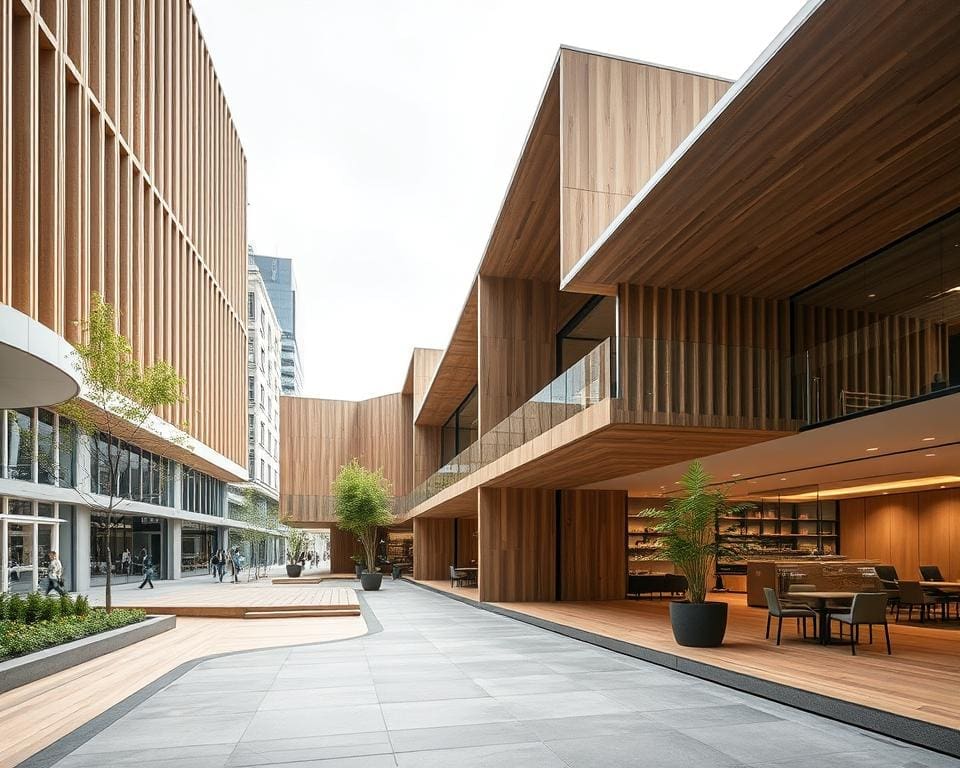David Chipperfield stands as a pivotal figure in contemporary architecture, celebrated for his remarkable ability to blend modernity with tradition. This distinguished British architect, recognised for his elegant and thoughtful architectural design, has established a unique identity in an industry often marked by stark contrasts. His firm, David Chipperfield Architects, operates from key cities such as London, Berlin, Milan, and Shanghai, delivering innovative projects that respect historical contexts while pushing the boundaries of modern architecture.
Chipperfield’s work is underpinned by a profound appreciation for materials and surroundings, enabling him to create spaces that resonate with both innovation and heritage. This confluence of modern and traditional architecture not only shapes urban landscapes but also enriches the lives of those who inhabit them.
Introduction to David Chipperfield
David Chipperfield stands as a celebrated British architect known for his significant contributions to contemporary design. Born in 1953 in London, he embarked on his journey in architecture after rigorous studies at Kingston School of Art and the Architectural Association. The establishment of his architectural firm in 1985 marked the beginning of a fruitful career, characterised by an innovative approach that harmonises modern aesthetics with traditional craftsmanship.
Chipperfield’s portfolio is expansive, featuring an array of projects that range from museums and galleries to residential and public buildings. His ability to integrate contemporary design within historical contexts has made him a pivotal figure in the architectural landscape of the United Kingdom. Each project reflects a meticulous commitment to detail that underscores his philosophy of marrying functionality with beauty.

David Chipperfield: Merging Modernity with Tradition
David Chipperfield’s architectural designs exemplify a seamless blend of modernity and tradition. Characterised by simplicity and elegance, his work showcases a thoughtful use of natural materials such as stone and wood. This choice not only enhances aesthetic appeal but also creates spaces that resonate harmoniously with their surroundings. Chipperfield prioritises functionality without sacrificing form, resulting in timeless structures that complement historical contexts, often incorporating elements that nod to local traditions and cultures.
Defining Characteristics of His Work
The defining characteristics of Chipperfield’s work include:
- Minimalism: His clean lines and uncluttered spaces evoke a sense of tranquillity.
- Contextual Awareness: Structures connect meaningfully with their environment and history.
- Material Honesty: Utilising materials that speak to their location adds authenticity to his designs.
Influence of Modern Architecture
Chipperfield’s influence on modern architecture is notable. He embraces the principles of modernism, frequently challenging its boundaries. His projects reflect a deep engagement with site-specific responses, successfully demonstrating how contemporary design can honour its historical and cultural precedents. The focus on integrating traditional aesthetics with contemporary functionality inspires a new generation of architects, promoting an understanding of the importance of context in architectural design.
The Role of Tradition in Contemporary Design
Tradition serves as a foundation in the realm of contemporary design, shaping how architects approach modern projects. David Chipperfield’s work exemplifies this relationship by seamlessly integrating elements of traditional architecture into his architectural design. Understanding historical context not only informs the aesthetic choices but also allows for a dialogue between the past and the present.
Chipperfield employs a variety of strategies to merge the old with the new, emphasising the importance of elements such as:
- Scale — ensuring that buildings resonate harmoniously with their surroundings.
- Proportion — creating a sense of balance that reflects historical precedents.
- Materials — selecting those that honour both the environment and traditional craftsmanship.
This deliberate approach cultivates an architectural narrative that transcends mere functionality, inviting a richer experience for occupants and passers-by alike. Ultimately, the fusion of traditional architecture within contemporary design leads to spaces that are both meaningful and reflective of their context. Such dedication to tradition elevates the architectural conversation, making modern designs not only relevant but also deeply resonant.
Innovative Architecture by David Chipperfield
David Chipperfield has made significant contributions to the landscape of innovative architecture, particularly with projects that redefine and enhance urban spaces. His approach combines contemporary design sensibilities with a deep respect for historical context, creating buildings that resonate with their surroundings.
Projects Transforming Urban Spaces
Among Chipperfield’s most illustrious works is the rebuilding of the Neues Museum in Berlin. This project perfectly showcases his skill in restoring historic buildings while integrating modern elements. Chipperfield’s design not only preserved the museum’s historical essence but also revitalised the urban area surrounding it.
Further testament to his vision can be seen in the Thames Gallery in London. This project aims to enrich public life by offering a platform for art and community engagement. Similarly, the Hepworth Wakefield in Yorkshire stands out as a beacon of culture, fostering interaction among visitors and the local populace.
In each of these projects, David Chipperfield illustrates a commitment to transformative design. His innovative architecture not only enhances the character of urban spaces but also encourages connection among diverse communities, reinforcing the importance of dialogue in today’s architectural landscape.
Architectural Design Philosophy
David Chipperfield’s architectural design philosophy emphasises a thoughtful integration of modern architecture with traditional elements. His approach values the history inherent within existing structures while promoting innovative architecture that respects and enhances the landscape. This blend creates a sense of continuity, inviting appreciation across diverse audiences.
Cohesion of Modern and Traditional Elements
The cohesion of modern and traditional elements stands as a hallmark of Chipperfield’s work. He meticulously selects materials and employs design languages that resonate with time-honoured aesthetics. Each project establishes a dialogue between the past and present, ensuring that new constructions feel both fresh and familiar. This balance not only pays homage to architectural heritage but also enriches the user experience.
Sustainability in Architectural Practice
Sustainability is pivotal in Chipperfield’s architectural practice, reflecting a commitment to environmentally responsible designs. He advocates for energy-efficient solutions and the sustainable utilisation of materials across his projects. Features that reduce energy consumption and extend building longevity are integral, affirming that innovative architecture can lead to a more sustainable future. His designs encapsulate the belief that thoughtful architecture contributes positively to both the environment and society.
Recognition and Awards
David Chipperfield has garnered immense recognition for his outstanding contributions to the field of architecture. His portfolio is adorned with numerous prestigious awards, highlighting his commitment to excellence. These accolades not only serve as a testament to his innovative designs but also inspire others within the architectural community.
Influences on the Architectural Community
Chipperfield’s influence transcends his remarkable projects. Through lectures, teaching roles, and publications, he actively engages in discussions that shape modern architectural thought. His advocacy for thoughtful design principles resonates with emerging architects, encouraging them to prioritise contextual storytelling. As he champions these ideals, Chipperfield strengthens the values held by the architectural community, fostering a culture of creativity and critical engagement.
The Impact of David Chipperfield’s Firm
David Chipperfield’s architectural firm has undeniably transformed the global architectural landscape. With a portfolio that spans across continents, the firm showcases a broad spectrum of projects that reflect the flexibility and adaptability inherent in Chipperfield’s design philosophy. This approach not only embraces the principles of modern architecture but also respects the nuances of local traditions, enabling each project to resonate with its surrounds.
At the core of the firm’s success is its commitment to collaboration. By engaging local communities and industry experts, David Chipperfield ensures that every design phase incorporates diverse perspectives. This inclusive method guarantees that the architectural firm’s output is not merely functional but also enhances the identity and character of the spaces it occupies.
By balancing innovation with a profound respect for heritage, David Chipperfield’s firm sets an inspiring precedent in the architectural community. It continues to push boundaries in modern architecture, illustrating how contemporary design can fuse seamlessly with traditional elements to create vibrant, sustainable spaces that cater to evolving societal needs.









